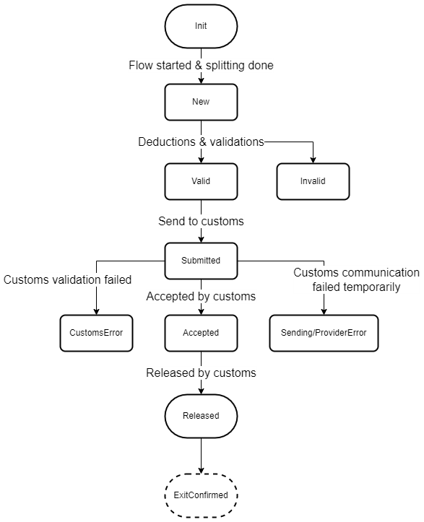Basic data flow
The most common way our customers integrate with our CAS solution is by following the basic data flow shown below
- Create a customs shipment in CAS that describes which goods are being transferred
- If necessary, CAS will enrich this data with the configured master data & deductions
- The processing by CAS will result in 1 or multiple declarations to the relevant customs systems
- The customs systems will send responses to the declaration (e.g. released for free circulation)
- The customs response is translated to an update of the declaration data & status
- The customer is notified of the update through the web hook they registered with CAS

Declaration lifecycle
The previous basic data flow can be followed through a number of status changes of the respective declarations. Each status reflects a specific point in the flow as shown in figure below.

The above schema shows the most common statuses. However, other statuses are possible in more advanced flows and can be found at Declaration statuses.
Take note that the declaration data can only be modified when the declaration is in certain statuses. For example, you can make an invalid declaration valid by correcting the declaration in the UI. However, a released declaration can only be changed by following an invalidation or an amendment procedure which can be initiated by performing the related Declaration actions. On the other hand, it is always possible to correct the declaration when it is in an error state.